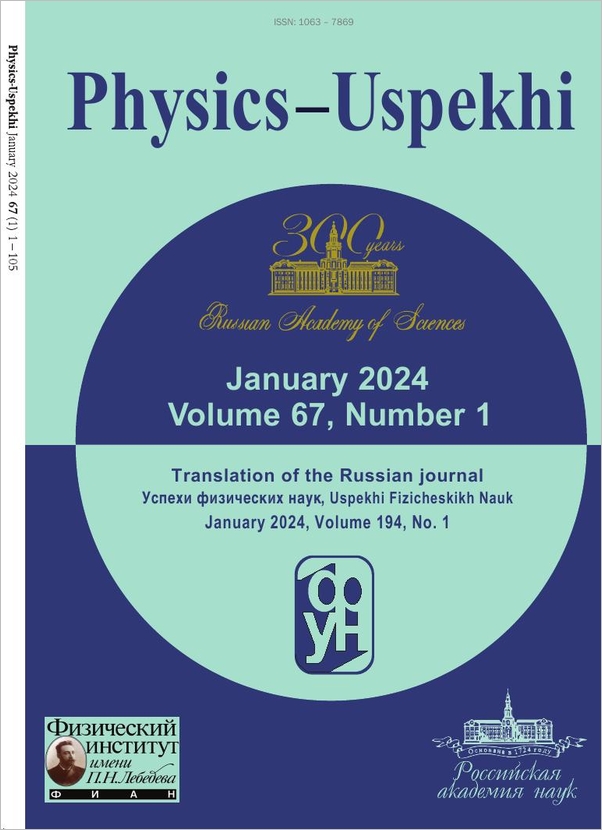|
90th ANNIVERSARY OF THE P.N. LEBEDEV PHYSICAL INSTITUTE (LPI). REVIEWS OF TOPICAL PROBLEMS
Coherent properties of high-current nanosecond discharge radiation
I. N. Tilikin, N. V. Pestovskii, S. N. Tskhai, T. A. Shelkovenko, S. A. Pikuz, S. Yu. Savinov
Lebedev Physical Institute, Russian Academy of Sciences, Moscow
Abstract:
We consider the coherent properties of short-wavelength radiation generated by high-current nanosecond discharges. The first part of the paper is concerned with the feasibility of using a plasma soft X-ray radiation source, the X-pinch, proposed at the Lebedev Physical Institute in the late 1970s as part of the inertial thermonuclear fusion program based on high-current nanosecond discharges. Experimental studies of the X-pinch suggest that a high-temperature plasma with extreme parameters is produced in it, which emits a high-power electromagnetic pulse in a broad wavelength range, with the X-ray radiation source (1 keV<$E$<10 keV) possessing unique parameters. Its dimensions are so small (<1$\ \mu $m) that the radiation it emits is spatially coherent. When it was used in projection radiography, phase contrast was observed in images of low-absorbing objects. The results of assessing the applicability of the wave approximation in image analysis and simulations of the intensity distribution in images using Fresnel integrals are presented. In the second part of the paper, we analyze a new physical phenomenon, also discovered at the Lebedev Physical Institute, related to the production of a short (<2 ns), narrowly directed electromagnetic radiation pulse in the pre-breakdown stage of a high-current discharge on the surface of a ferrite, 50% of the energy spectrum of which lies in the X-ray region ($h\nu >1$ keV) with an energy of $\sim 0.6$ mJ and average power of $\sim 0.3$ MW. The pulse propagates parallel to the ferrite surface towards the anode with a low angular divergence of $<2^\circ $. The high radiation directivity in the absence of special optical devices and the quadratic dependence of the energy flux density transferred by a detected radiation pulse on the length of the working part of the ferrite prism indicate with a high probability its coherent nature. We discuss the possible mechanism for generating radiation, which involves the excitation of short-term magnetization of ferrite sections as a result of the passage of an exciting electromagnetic pulse over the surface of a ferrite prism during the formation of a longitudinal electric field in the interelectrode gap and subsequent coherent addition of elementary waves. The total radiation from the entire surface as a result of interference is concentrated in a small spatial region, which explains the high intensity and directionality of the radiation.
Received: October 9, 2023
Revised: February 1, 2024
Accepted: February 7, 2024
Citation:
I. N. Tilikin, N. V. Pestovskii, S. N. Tskhai, T. A. Shelkovenko, S. A. Pikuz, S. Yu. Savinov, “Coherent properties of high-current nanosecond discharge radiation”, UFN, 194:8 (2024), 865–880; Phys. Usp., 67:8 (2024), 814–827
Linking options:
https://www.mathnet.ru/eng/ufn15781 https://www.mathnet.ru/eng/ufn/v194/i8/p865
|


| Statistics & downloads: |
| Abstract page: | 76 | | References: | 15 | | First page: | 9 |
|





 Contact us:
Contact us: Terms of Use
Terms of Use
 Registration to the website
Registration to the website Logotypes
Logotypes









 Citation in format
Citation in format 